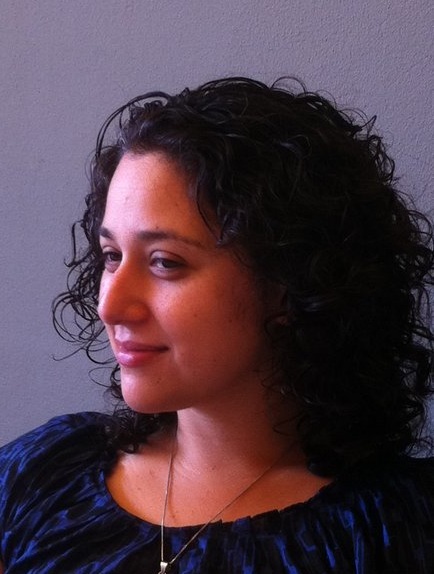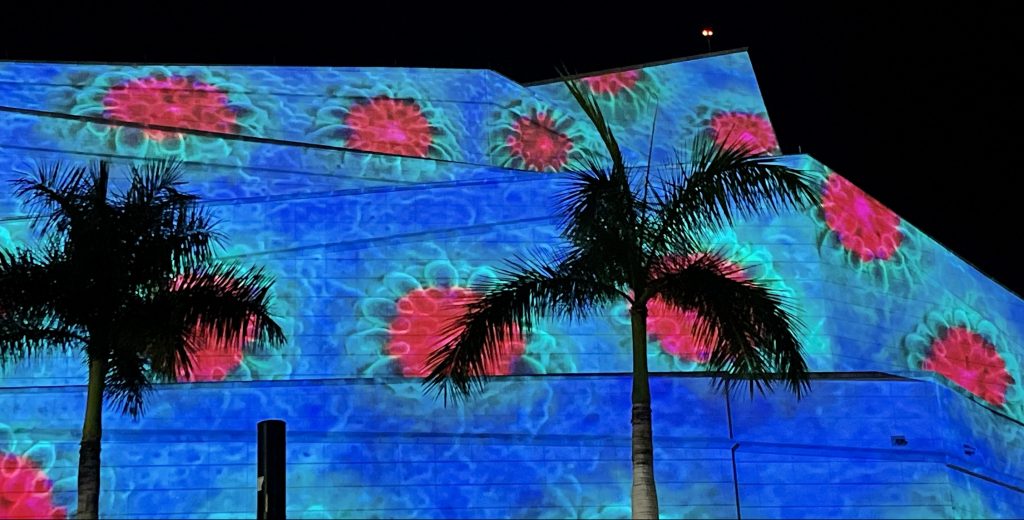
Tatiana Hernandez: Art is joy
By Elizabeth Miller, Knight Foundation
As an artistically-inclined child, Tatiana Hernandez gravitated toward dance. Flamenco and tap helped her find her own rhythm. Years later, her experience working with a group of local artists and performers ignited that same passion.
“I wanted to know and do things that were joyous,” Hernandez said of her job with the Los Angeles-based Machine Project. “Art is joy.”
Now as an associate in Knight Foundation’s arts program, Hernandez helps oversee grantmaking that uses the arts to both inspire and engage, reconnecting people to both their communities and their inner artists. She travels to eight communities – from San Jose, to Detroit and Macon, Ga. – looking for ideas big and small that involve audiences as more than just consumers, but as participants and creators.
We recently sat down with her to find out more about what she has discovered traveling across the country, from arts innovation in Minnesota to the revival of the Jit in Detroit.
You spent a lot of time in Detroit this spring helping launch the city’s first Knight Arts Challenge. What is unique about the city’s cultural community? T.H.: There is a wealth of opportunity right now in Detroit. Reinvention and adaptation are key. That’s an interesting space to be in artistically and creatively. And yet the artists attracted to that level of freedom are also well prepared to deal with any bureaucratic challenge they may face. Because everything is on the table, people are less inclined to hold on to old social or organizational structures that don’t make sense. They’re not tied to a certain way of doing things. It’s exciting because the rest of the county is also navigating a changing economy. Many are looking to Detroit to find new models of arts infrastructure.
Detroit also has a long history of artistic excellence and a deep cultural community. The city’s arts identity is wrapped up in its history. People know it as the home of Motown, but it also has a great electronic music scene and is one of the oldest puppetry communities in the United States – who knew! There’s an interplay where people are resurrecting those cultural roots but mashing them up in a new, contemporary way.
We do arts challenges and open contests in a variety of cities. Do you think there’s something inherent about a challenge that draws out ideas from the community? T.H: The uniqueness of the challenge lies in its broad approach. Philanthropy is often accused of being exclusive and the challenge is inherently inclusive. We recognized that the best ideas don’t necessarily come from 501(c)3s. We also rely on our readers to lend us their expertise as they are knowledgeable both in their artistic fields and in their communities. It’s a different way of making decisions.
Knight funds the arts in eight communities around the country. Are you seeing any trends among them? T.H.: The biggest trend nationally is that people are doing more with less. As financial support for the arts has decreased and traditional patron bases are changing (if not being eliminated altogether), we’re seeing a chance for new opportunities. This means that regardless of the age of a cultural institution, they’re thinking about things in a “younger” and much more more experimental way.
What has surprised you most? T.H.: How useful and interesting the Knight cities are as art incubators. We have large cities with long cultural histories like Philadelphia, Miami and Detroit. And also small towns like Macon, Ga. where a rich social history bleeds into everything that happens. I was surprised to find that some of the places that are the most vibrant aren’t necessarily the biggest cities. For example, the level of artistic innovation and participation in St. Paul, Minn. is phenomenal, so much so that the state passed a cultural amendment which brought more than $90 million in support for it artistic community.
Do any of them present particularly unique opportunities? T.H. They all do. In places like Macon, Ga. and San Jose, Calif. we have the opportunity to create a shared perspective in a diverse community, not just a racial subsection of it. It’s about redefining community so that everyone is a part of the arts, even if historically they weren’t included. Philadelphia has an incredibly rich artistic community with a long history, but in many ways that makes it less flexible. So there it’s about finding ways to encourage more innovation. In Charlotte, N.C. the community has grown so quickly and its demographics changed rapidly, so in a lot of ways it is still figuring out what its arts community could be.
Earlier this year you joined the board of the National Association of Latino Arts and Cultures. What do you find exciting about the opportunity? T.H.: I believe culture and the arts serve as a bridge between people. They help individuals better understand one another in a way beyond language. Traditionally, the National Association of Latino Arts and Culture’s strength has been regionally, in places like the West Coast and Texas. But as communities have grown the last ten years with a huge influx of Latinos, its relevance will only increase. If we can make people feel at home in their new home through the arts, we can bridge the challenges that come with immigration, things like language barriers and cultural misunderstandings. I believe everyone should be able to see the richness that arts are culture bring to the place they live, regardless of “where” it’s from.
The growth of Miami’s art scene is getting a lot of attention, both locally and nationally. How can the city’s artistic community continue to grow? T.H. The city has done a really good job at branding and communicating its arts to the outside world, but we’re still so young and there’s much more we can do. We need to continue to support our artistic infrastructures and support our artists in a way that looks at the community’s long-term needs. If we don’t serve our artists, this cultural momentum will be superficial and unsustainable. We also have a way to go in terms of building connections with international communities. Miami sits at a nexus between Europe and Latin America, but our artistic connections to both continents could be stronger. I’d like to see Miami take on a more visible leadership role in building those connections.
Audience engagement is one of our priorities. What have you seen work in terms of attracting new audiences and keeping them there? T.H.: The most successful organizations who have built new audiences in the last ten years are the organizations and spaces that aren’t thinking about people as audiences but as communities. Approaches that solely improve marketing and communications to reach new people just aren’t relevant anymore. People are seeking deeper attachments to the things they care about. People feel connected when they’re doing, not when they’re viewing. It comes down to a difference between membership and ownership. What organizations need today in order to be financially stable and culturally relevant is to have participants who feel ownership over the institutions. Like how the Detroit Institute of Arts helped people build a personal connection with art by taking it out of the museum and into the community.
Finish this sentence: One of the most exciting ways that the arts bring people together is… T.H.: …by doing. I don’t consider myself an artist and often find the creative process intimidating. So when arts make people comfortable and allow them to engage in their own creativity, that’s the most exciting thing!
Finish this sentence. My cultural highlight of 2013 so far is…. T.H. …watching The Hinterlands perform the Circuit at the Playhouse in Detroit. The dance he’s performing, the Jit, emerged at the cross of the Motown era and the BBoy era.
What else do you want people to know about the intersection of arts and communities? T.H.: I love that there’s a growing trend where the arts are being included in community building conversations from the beginning, rather than as an add on later. That’s important and arts organizations should continue to push for a seat at the table. I am hopeful that all of the spunk, creativity and scrappiness that’s been cultivated over the few years – which was as a result of less financial resources being available – continue to be the passion that drives our institutions forward.
Recent Content
-
Artsarticle ·
-
Artsarticle ·
-
Artsarticle ·
